Kraków 2007-08-01
Jedlina Zdrój railway station.
The Jedlina Zdrój railway station was commissioned on October 15, 1880, in Prussian times, and was built together with the railway line from Wałbrzych to Nowa Ruda, which was extended to Kłodzko. Currently, this line is No. 286. The construction of this line was carried out in the period 1876 - 1880 and it was a part of the Silesian Mountain Railway.
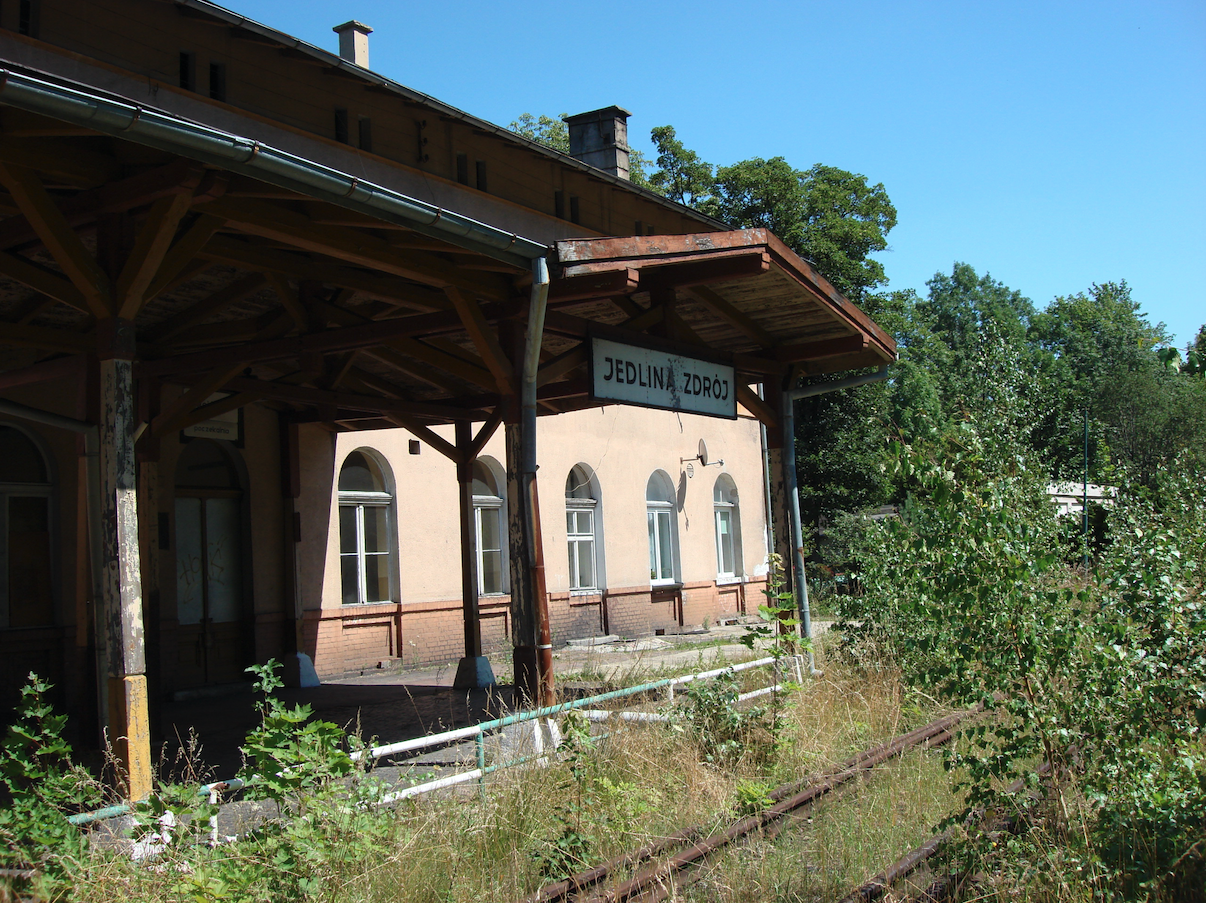
Description of the photo: We visited Jedlina Zdrój station in the worst possible time for Polish railways. 2007 year. Please treat the photos as historical and not as a criticism of PKP. The Jedlina Zdrój station does not look like this now.
There were several reasons for building this trail. Already at the beginning of the development of railways in Silesia, the local community called for the construction of a railway line for the economic revival of the Sudetes. An important argument was the possibility of exporting hard coal from mines in the Wałbrzych and Nowa Ruda regions. Finally, an important argument was added - Shortening the rail route between Vienna and Berlin. The first route between these metropolises ran through Prague and Dresden. The new trail would be approximately 120 km shorter. As the investment was expensive and high-risk, the factory owners sought to finance the construction from the Prussian treasury. The Prussian Ministry of Railways took the initiative and in 1856, a committee for the construction of the Central Berlin-Vienna Railway was established. The entire mountain trail was to connect Kłodzko with Lubań, where the trail diverged from Gorlitz and Węgliniec. The trail runs through such towns as: Wałbrzych, Sędzisław, Marciszów, Jelenia Góra, Gryfów Śląski. Unexpectedly, the construction of railway lines was joined by the fact of the outbreak of war between the great powers: the Second French Empire and the Kingdom of Prussia, supported by other German countries. This war lasted from July 19, 1870 to May 10, 1871. During this war, it became clear how important the role of railroads was in hostilities.
Just before the Great World War, the Jedlin Zdrój station served about 25 passenger trains a day and about 20 freight depots.
It is 75 km to Wrocław from Jedlina Zdrój, and 6 km to Wałbrzych. The Jedlina Zdrój railway station is located 496 m above sea level. For comparison: Wrocław Główny is 124 m above sea level. Kłodzko Główna is located at an altitude of 287 m above sea level. Wałbrzych Główny is located 505 m above sea level.
The Jedlina Zdrój station connects both railway routes: the Bystrzyca River Valley (No. 285) and the Sudecka Mountain Railway (No. 286).
Railway route No. 286.
The former Sudecka Mountain Railroad is line No. 286 with the following stations: Kłodzko Główna, Bierkowice, Gorzuchów Kłodzki, Ścinawka Average, Nowa Ruda, Nowa Ruda Przedmieście, Nowa Ruda Zdrojowisko, Ludwikowice Kłodzkie, Świerki Dolne, Bartnica, Głuszyca Górna, Głuszyca , Jedlina Zdrój, Jedlina Górna, Wałbrzych Główny. The trail is 50.99 km long. The line is non-electrified, single-track, and double-track in two parts (Głuszyca - Ludwikowice and Nowa Ruda Kłodzko). The maximum speed for passenger trains is 100 km / h. Currently (2021), the trail is undergoing revitalization to adapt it to the current needs of residents and tourists.
Railway route No. 285.
In the period 1902 - 1904, another railway route was built, which connected the Jedlina Zdrój station with the Świdnica Kraszowice station and then through the Sobótka Zachodnia and Kobierzyce stations with Wrocław. The trail is called the Bystrzyca River Valley Trail.
Currently it is line No. 285 and it is single-track, non-electrified. The line is 82.17 km long. The maximum speed for passenger trains is 80 km / h. Currently (2021), the trail is undergoing revitalization to adapt it to the current needs of residents and tourists.
This rope turned out to be as important as the mountain trail, because it connected the Sudetes with Wrocław, bypassing the heavily loaded Wałbrzych Główny - Wrocław Główny route. In 1945, during the Second World War, this trail was significantly damaged. Already in Poland, its reconstruction took a long time, because the last engineering construction near the Jugowice station was repaired in 1950.
On the Bystrzyca River Valley route there are railway stations and stops: Wrocław Główny, Wrocław Główny Towarowy, Wrocław Wojszyce, Wrocław Partynice, Wrocław Klecina, Bielany Wrocławskie, Domasław, Kobierzyce, Wierzbice Wrocławskie, Olbrachtowice, Rogów Sobócki, Sobótka, Sobótka Zachodnia, Strzelce Świdnickie, Szczepanów, Marcinowice, Pszenno, Świdnica, Bystrzyca Dolna, Burkatów, Bystrzyca Górna, Lubachów, Zagórze Śląskie, Jugowice, Jedlina Dolna, Jedlina Centrum, Jedlnia Zdrój.
Construction history.
The construction of both railway routes was very difficult. The investment was a challenge for Prussian engineers. It required the construction of a total of over 200 engineering structures: tunnels, bridges, viaducts, railway crossings, culverts and retaining walls. The technique of building a railway line in the Sudetes was the same and consisted in building terraces on the slopes of hills with numerous arches on which the tracks were laid. Ravines were built through smaller hills and embankments intersecting smaller valleys. Since there were no large and heavy trucks at that time, the workers first laid makeshift tracks for the narrow-gauge railway. The wagons were used to move the excavated soil and rocks. Materials needed for construction were transported there. Stone from nearby quarries, bricks from brickworks, steel for building bridges, railway sleepers, tracks and turnouts were transported.
Eight large railway bridges were built on the mountain route. Mainly of steel structure, on stone and concrete supports. On the trails in the Bystrzyca valley, the longest of the bridges, Rabenstein Brücke, in the town of Lubachów, measures 143.60 meters. Due to the need for its renovation in 1989, the trail was closed. After the renovation, the passenger trains did not return to this part of the route. This happened a few years later.
Tunnel under the Sajdak mountain.
As part of the construction of the Kłodzko - Wałbrzych railway line, three double railway tunnels were built: Pod Góra Sajdak, Pod Mały Wołowcem, and Pod Świerkowa Kopą. The construction of tunnels has provided employment for around 1,000 workers and miners for several years. The tunnels played an important role during the warfare of the Great World War as well as during the Second World War. They served as shelters for military transports and hospital trains.
The tunnels were built using a method developed in the Alps by the Austrians. First, a narrow section of the tunnel was bored for several meters and secured with stamps and formwork. Then this tunnel was deepened and widened. Then it was covered with hewn stones of various types of sandstone, connected with concrete mortar. In some places, clinker brick was used. More meters of narrow-gauge railway tracks were added. And so they moved forward simultaneously from both sides. The entrance portals were made of hewn stone, mainly sandstone.
In this way, a tunnel was dug under the Sajdak massif, which rises 586 m above sea level. The tunnel is double, i.e. two tunnels run next to each other. Each of them is designed for a single track. The length of the tunnels is 380 m. The tunnels are straight, without bends. But there is a difference in the height of the entrances to the tunnel. On the west side, from the Jedlina Zdrój station, the height is 505 m above sea level. On the eastern side, from Kłodzko, the entrance is 500 m above sea level. The tunnel is about 6.20 m high and about 4.80 m wide. The tunnel has escape recesses and inspection recesses for the tunnel's drainage system. The first tunnel on the north side was completed in 1879, but its launch was related to the opening of the Jedlina Zdrój railway station and the entire section. This tunnel took four years to build. The second tunnel was put into operation in 1912 and was built in three years; 1909 - 1911.
Tunnel under Mały Wolowiec.
The tunnel under Mały Wołowiec was built at the same time as the tunnel under the Sajdak mountain. This tunnel is situated to the northwest of the Jedlina Zdrój station. It is also a double tunnel. The first one is 1,560 m long and the second one is 1,601 m long. These tunnels are the longest in Poland. The first tunnel was put into operation on October 15, 1880, and the second in 1912. The Mały Wołowiec mountain is 720 m above sea level. The tunnels are straight, but with a slight slope towards the south-east, towards the Jedlina Zdrój station. On the south-eastern side, the inlet is 535 m above sea level. On the north-west side, the inlet is 540 m above sea level. The construction of the tunnels is identical to the tunnels under the Sajdak mountain, with two exceptions. Firstly. Due to the length of the tunnels, they are equipped with ventilation shafts carved in the rock, for ventilation, so that the tunnels do not contain smoke from steam locomotives. Secondly. Both tunnels are connected with each other by means of five connectors. They are placed approximately every 260 m. The connectors also constitute a system of escape chambers.
Tunnel under Świerkowa Kopa.
The tunnel under Świerkowa Kopa is the third tunnel on the Wałbrzych Główny - Kłodzko Główna route. It is located next to the Bartnica train stop. The tunnel is double and built at the same time as the other two tunnels: under Sajdak and under Mały Wołowiec. The Świerkowa Kopa Mountain is 609 m above sea level and is a gentle hill without a clear peak. The first tunnel is 1,171 m long. The second tunnel is 1,168 m long. The tunnel is straight but with a slope to the southeast. From the side of Kłodzko, the inlet is at an altitude of 530 m above sea level, and from the side of Wałbrzych (Jedlina Zdrój), it is at an altitude of 549 m above sea level. Both tunnels are connected by three connectors, which are also escape routes. A ventilation shaft was also made.
Jedlina Zdrój station.
Jedlina Zdrój station was built as a large facility with several main tracks and sidings. The station plain is large, but due to the topography it is curved. The main building of the station was built as a brick, two-story building. The building still exists today. There are apartments for railwaymen on the upper floor. The ground floor was intended for ticket and luggage offices, waiting rooms, restaurants and railway services. A warehouse building has been built nearby and still exists today. It has no function at the moment. A railway control room was also built, which ceased to fulfill its role since around 1995. A locomotive was also built, which had two positions for steam locomotives. Only the foundations remained of the depot. The water tower was placed in a brick building erected on the hillside, on the southern side of the station. The building still exists today. The windows are bricked up, but the water reservoir is inside.
The station has three platforms. Until the end of the 1980s, only two island platforms were used, which were marked as 1 Platform and 2 Platform. The edge of the platform (originally the first one) at the station building was no longer used and the railing was separated from the track. Both island platforms in the period 1910-1915 were roofed in the form of wooden sheds covered with tar paper. It is possible that the cover was previously made of sheet metal. At the same time, an underpass for travelers was built. Throughout the Prussian period, and then in Poland, the station, platforms and the underground passage were kept in good condition. Repairs were carried out depending on the needs.
Even in the 1980s, passenger trains with steam traction often came here. During the day 10-15 passenger trains appeared at the station. There were even long-distance trains. Diesel locomotives in use at that time, mainly ST43, SU45, SU46; they were sent to freight depots, mainly with coal wagons.
Passenger traffic at the Jedlina Zdrój station decreased drastically in the 90s of the 20th century. The number of passenger connections decreased, and the residents had to change to buses and their own passenger cars. Overall, the railway infrastructure began to degrade. The railway shed was closed.
Since 2000, the station has practically used only one track (No. 3) at the northern edge of Platform 2. As the climatic conditions in the Sudetes are very conducive to the development of flora, the tracks, which are rarely weeded, quickly became covered with self-seeding of various shrubs and trees. Every few years, the railway services removed these plants.
Unfortunately, the natural phenomena were joined by vandals who systematically destroyed the facades of buildings, especially the underground passage. They broke the windows in the vestibule above the entrance to the underpass. They destroyed benches, garbage cans and even lighting. In sum; what the financial outlays gave such image effects. PLK demolished the track at the ramp and the loading yard.
Passenger traffic on the line has never been completely closed. In 2017, the station was used by up to 40 passengers per day. Since 2008, SZT trains have been arriving in Jedlina Zdrój, mainly SA135 Pesa trains belonging to Koleje Dolnośląskie. There is also freight traffic, which is usually served by SM42 diesel locomotives.
In 2021, there were 15 passenger trains in the timetable. These were trains from: Kłodzko Miasto - Wałbrzych Miasto, Kudowa-Zdrój - Jelenia Góra and the opposite ones. Currently, there is no direct connection between Jedlina Zdrój and Wrocław Główny. The journey takes place with a change in Wałbrzych, and this is because the trains are diesel traction from Jedlina Zdrój to Wałbrzych, and electric traction trains run from Wałbrzych to Wrocław. The entire journey takes 90 minutes and the ticket costs PLN 20.10. In the winter season, all connections are served by Koleje Dolnośląskie.
Renovation and revitalization.
Trail No. 286 is renovated, passable and used. The tunnel under Mały Wołowiec is open, the one from the north, 1 601 m long. The second one, 1 560 m long, is closed. The tunnel under the Sajdak mountain is open north, south is closed. Tunnel under Świerkowa Kopa, both tunnels are open. All double-track sections are open, except for the section before Kłodzko. Train stations and stops are well-kept. Low-type platforms. Many sections of the trail have new tracks and the viaducts have been renovated. The railway viaduct over the voivodeship road No. 381 in Ludwikowice Kłodzkie was completely replaced. There are light signals on the trail. There are shaped semaphores only at the Nowa Ruda station. The road crossings have traffic lights to inform you that a train is approaching.
Already in 2007, plans for the revitalization of the railway route No. 285 were developed. The cost of the investment was estimated at PLN 89 million. The tender for this investment was announced in 2011. However, already in January 2012, it was announced that the cost of the investment was too high for the Dolnośląskie Voivodeship. The voivodeship wanted to take over the route from PKP PLK. It was only in January 2017 that an agreement was signed on joint financing of the revitalization of the line by the Dolnośląskie Voivodeship and PLK, with great support from the national budget. The entire investment is to be completed by 2023. Its cost was estimated at PLN 166 million, but the price will probably approach PLN 200 million. The journey by train from Wrocław to Jedlina Zdrój is to take 65-75 minutes.
By 2021, 89 facilities, including 116 investments, were completed on the Świdnica - Jedlina Zdrój railway route. The subgrade has been strengthened. The new track sections and turnouts from Świdnica to Bystrzyca Górna and in Jedlina Zdrój were laid. Material for further investments has been gathered.
In the area of Jedlina Zdrój station, new tracks were built from scratch and five turnouts were installed. Both island platforms were renovated. Historical shelters were renovated. Five nearby viaducts were renovated.
Photo report. 2007 year.
We visited Jedlina Zdrój station in the worst possible time for Polish railways. 2007 year. Please treat the photos as historical and not as a criticism of PKP. The Jedlina Zdrój station does not look like this now.
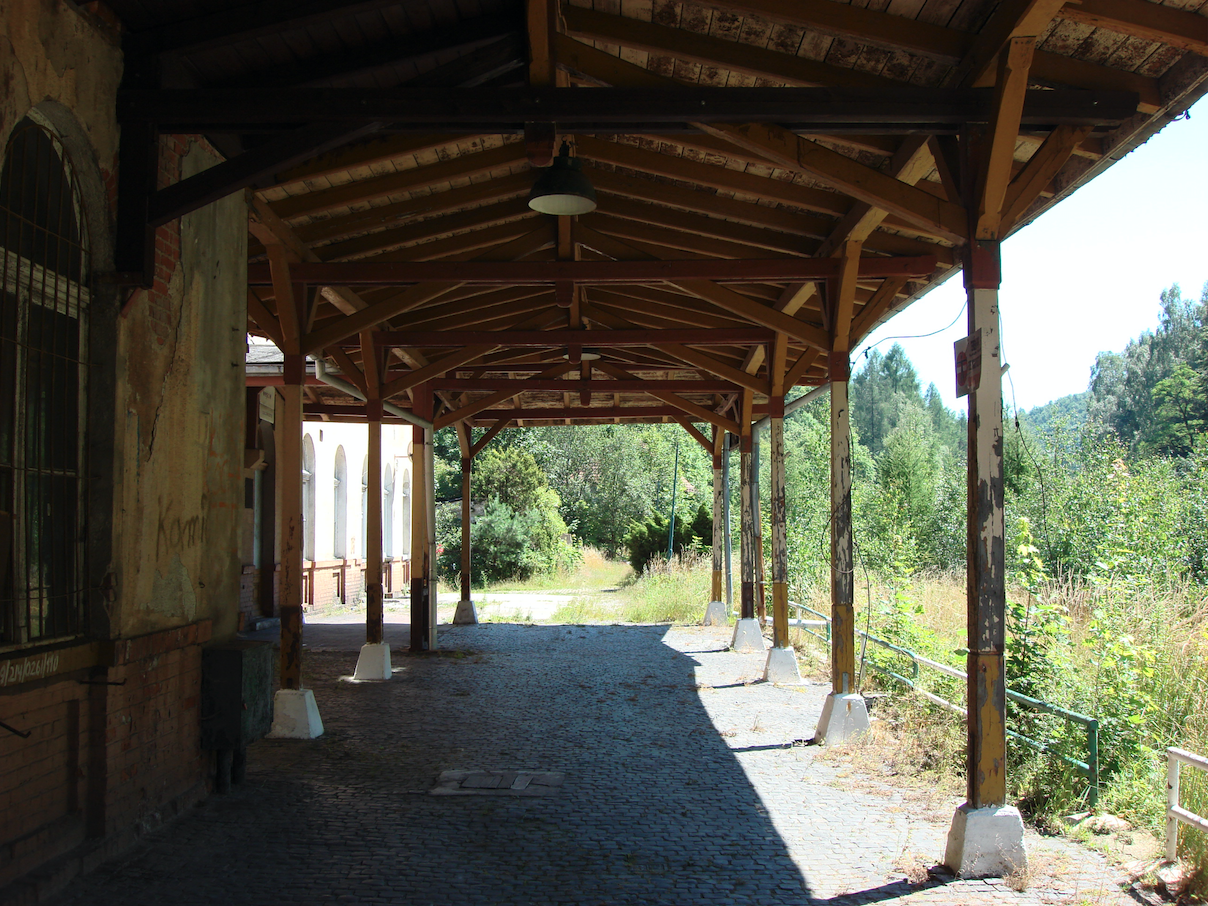
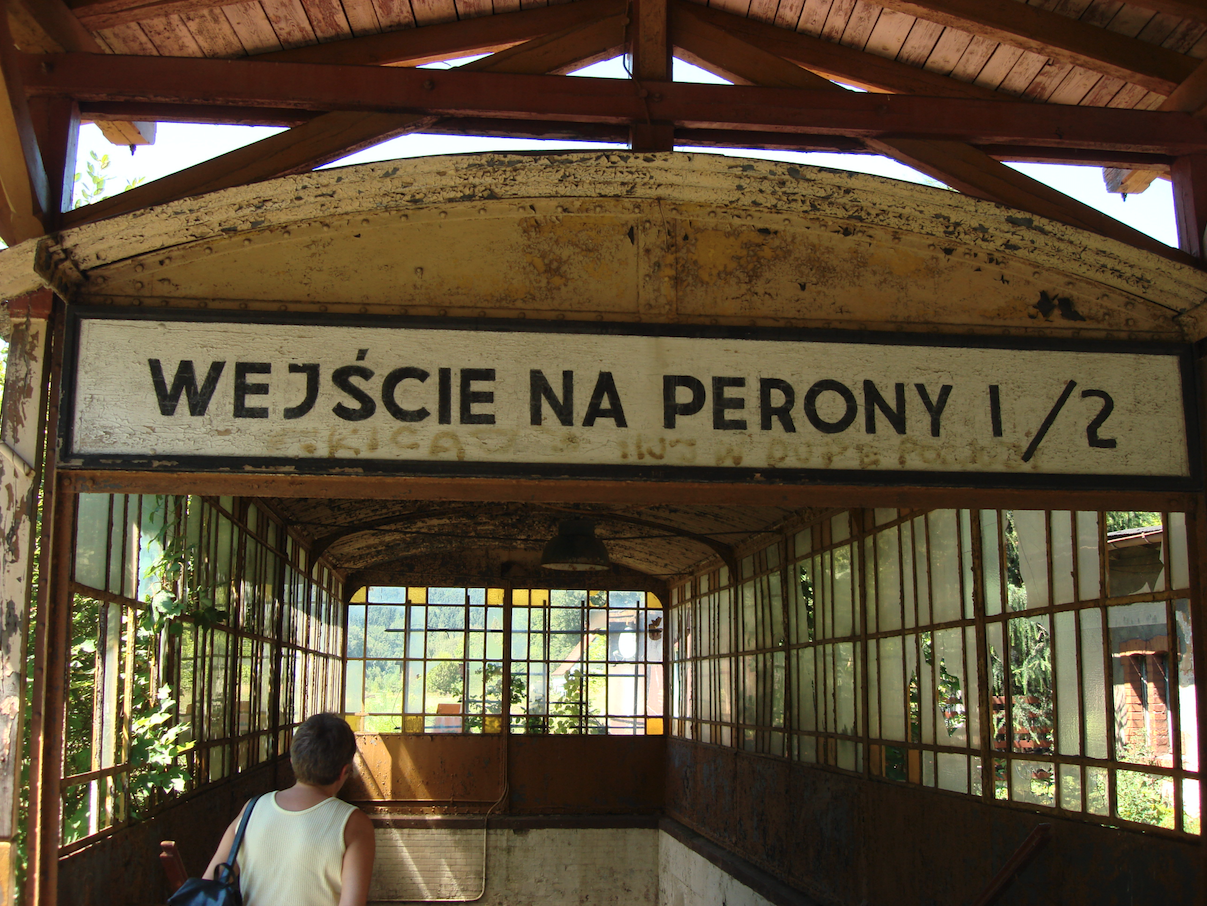
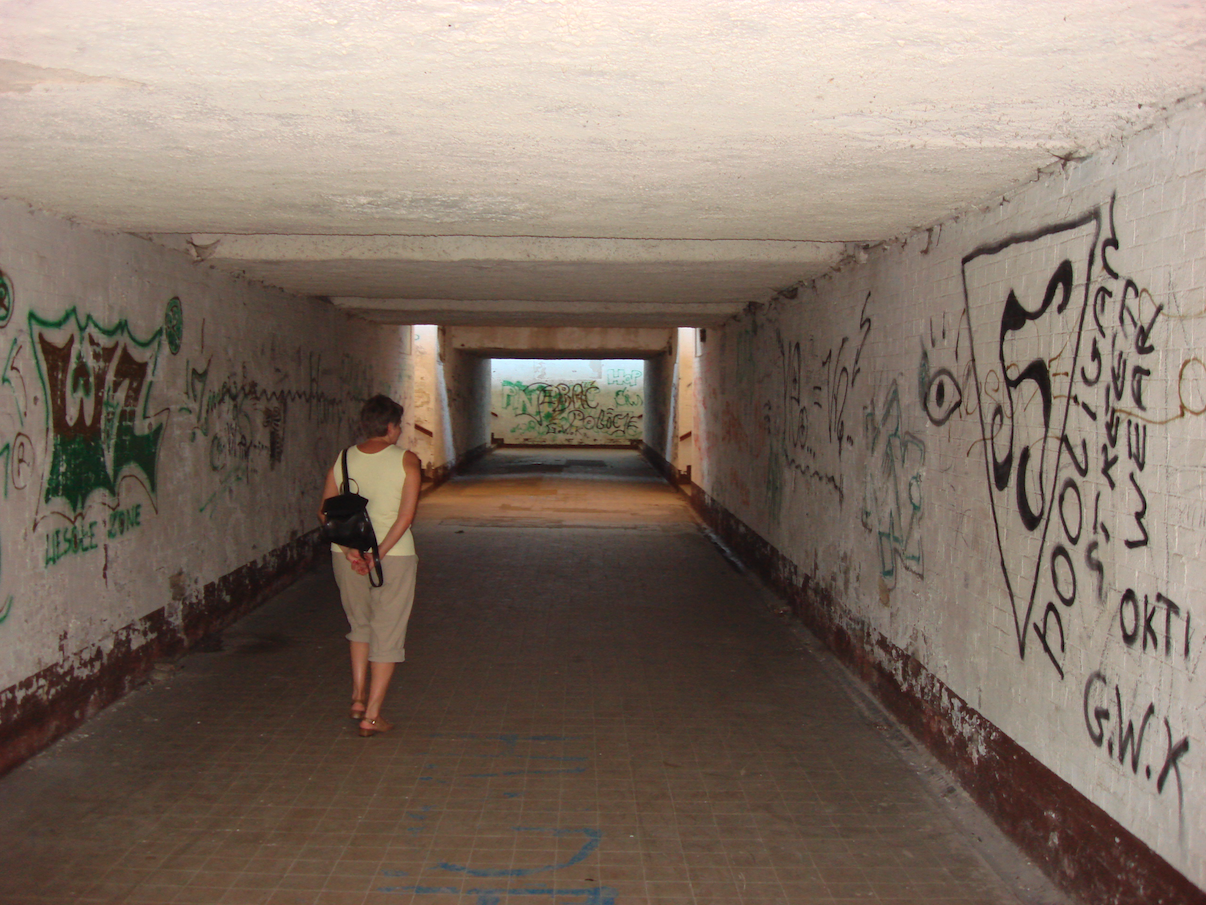
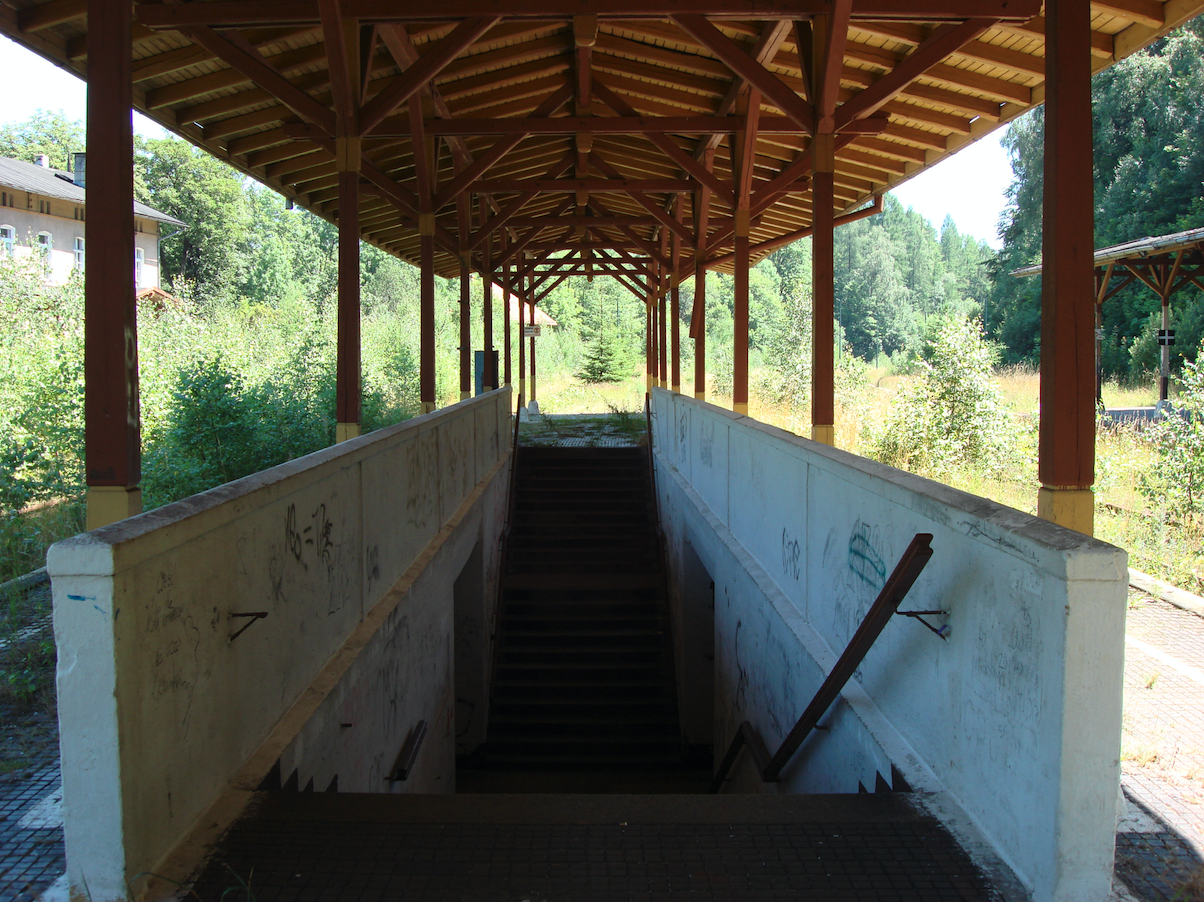
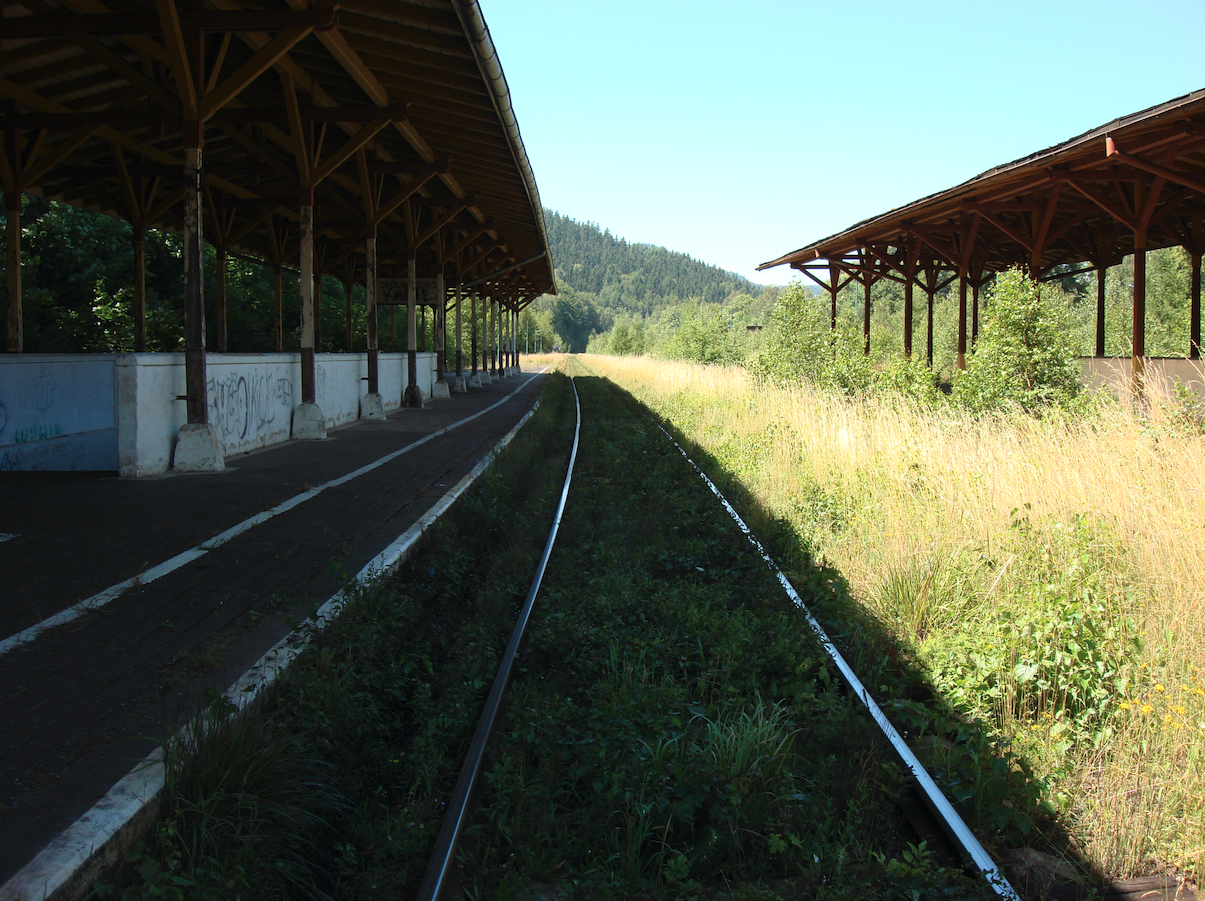
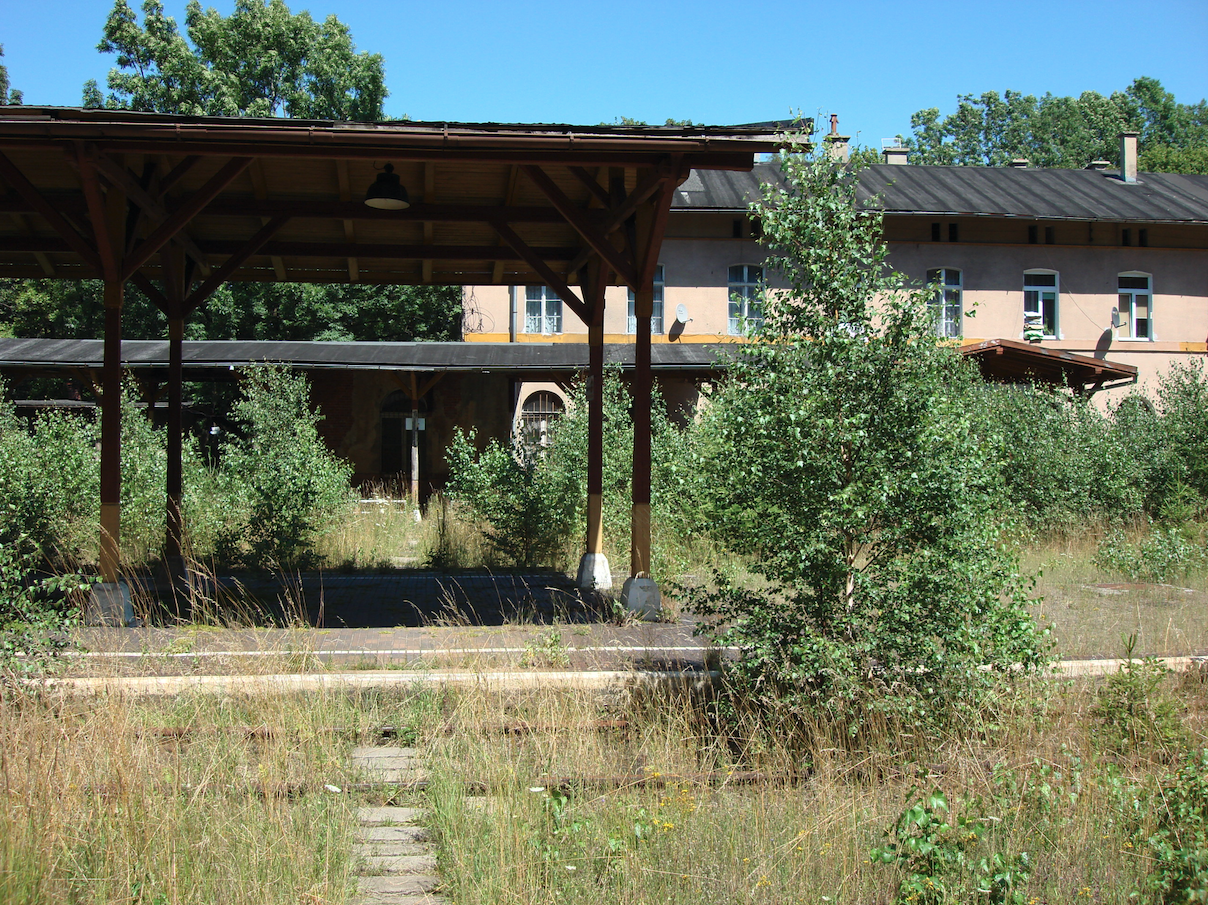
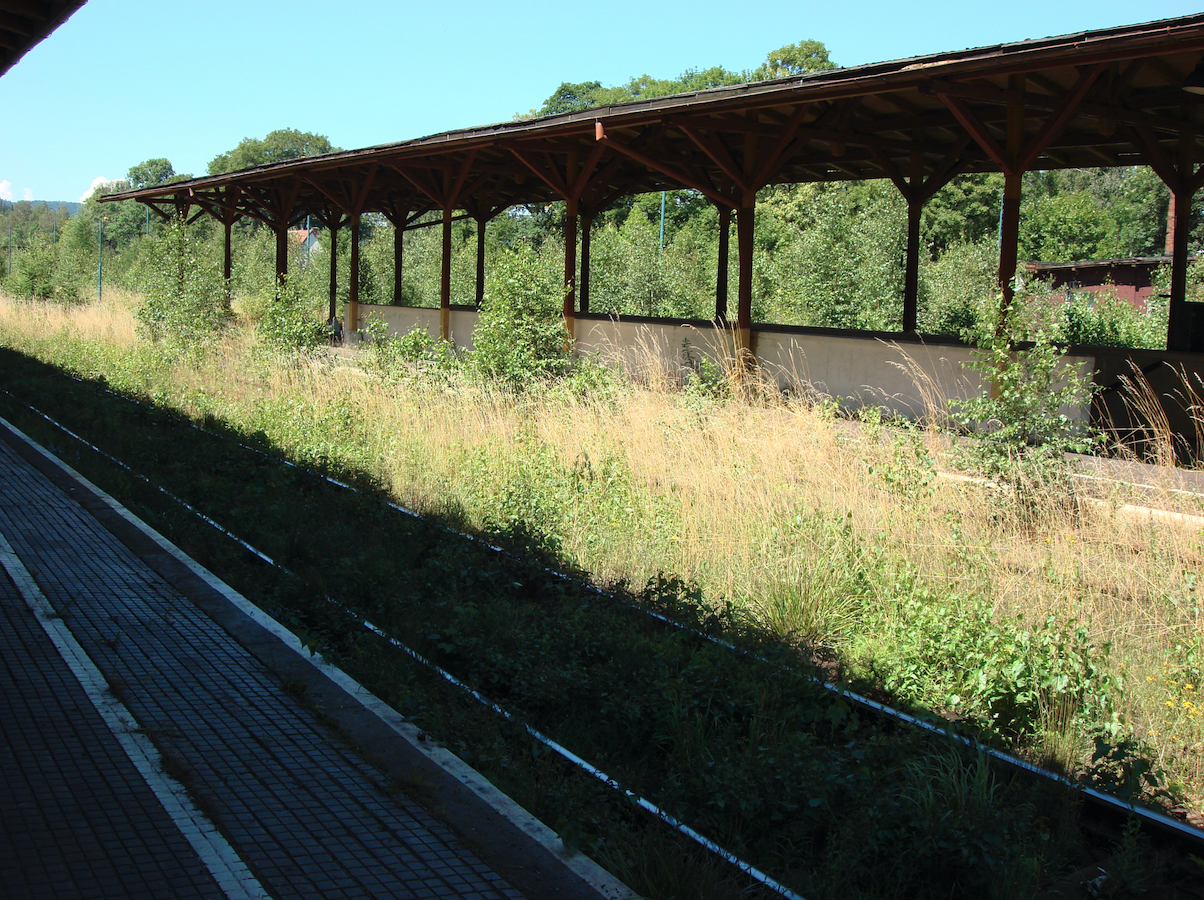

Written by Karol Placha Hetman
